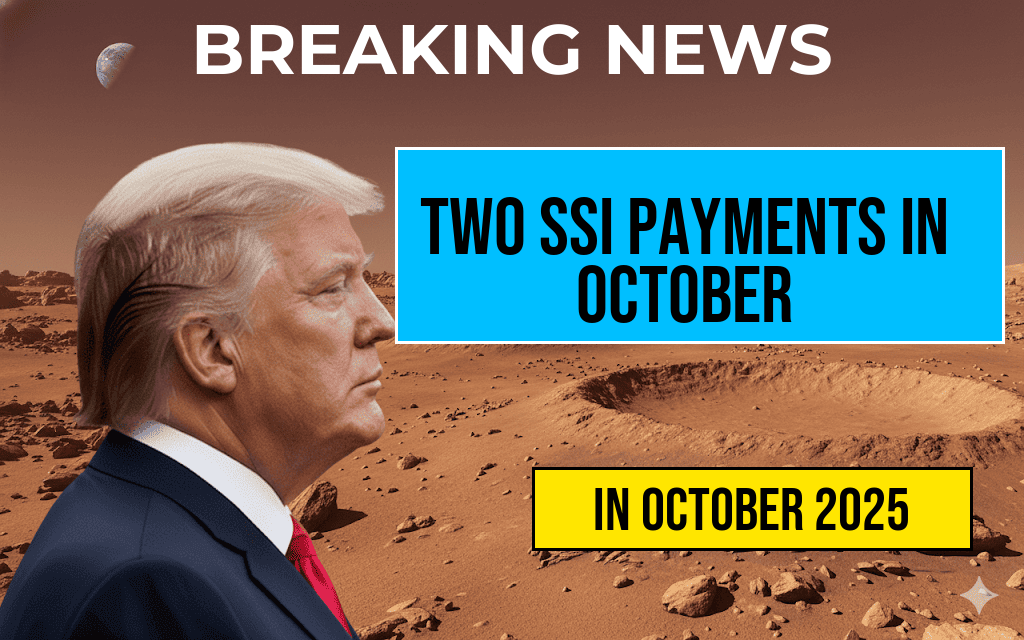Recipients of Supplemental Security Income (SSI) benefits will receive a unique payment schedule in October, with the Social Security Administration (SSA) issuing two payments during the month. This rare occurrence is part of a scheduled adjustment to the benefit distribution cycle, aiming to align payments with the start of the new month. Typically, SSI beneficiaries receive a single payment each month; however, due to the timing of the October calendar and federal payment regulations, beneficiaries will see two deposits in their bank accounts. This adjustment ensures recipients do not experience delays or gaps in their benefits, which are essential for covering basic living expenses. The first payment is scheduled for October 1, followed by a second disbursement on October 31. The SSA emphasizes that this dual payment is a one-time occurrence linked to the fiscal calendar and will not impact future benefit schedules.
Understanding the October Payment Schedule Adjustment
The SSA’s decision to issue two SSI payments in October stems from the way benefit dates are coordinated with federal payment systems and calendar days. Normally, SSI payments are issued on the first of each month, but when the first falls on a weekend or holiday, the payment is advanced to the last banking day of the previous month. In 2023, October 1 falls on a Sunday, prompting the SSA to schedule the initial benefit payment for the preceding Friday, September 29. To prevent recipients from experiencing a gap in their benefits or delays, a second payment is scheduled for October 31, aligning with the regular monthly cycle. This adjustment ensures that SSI recipients receive their benefits consistently, maintaining financial stability for those relying heavily on these payments.
Implications for Beneficiaries and Financial Planning
The issuance of two payments in October offers a unique opportunity for recipients but also requires careful financial planning. Beneficiaries should be aware of the timing to avoid misallocating funds or missing payments. Financial experts recommend reviewing upcoming expenses and adjusting budgets accordingly. For some, the extra payment may cover additional expenses or help build savings for future needs. The SSA advises beneficiaries to confirm their payment schedules by checking their bank statements or contacting their financial institutions if there are any discrepancies. It’s also advisable to monitor official SSA communications and updates through their website for any further clarifications.
How This Affects Other Federal Payments
| Program | Standard Payment Date | October 2023 Payment Date(s) |
|---|---|---|
| SSI | 1st of each month (if not weekend/holiday) | September 29 (due to weekend), October 1, and October 31 |
| Social Security Retirement/Disability | Second or third Wednesday of each month | October 11 |
While SSI benefits are subject to this unique dual payment in October, most other federal benefits, including Social Security retirement and disability benefits, typically follow a consistent schedule. The SSA assures beneficiaries that this temporary adjustment does not affect the regular payment cycle of other programs, which will proceed as usual.
Official Guidance and Resources
The SSA maintains comprehensive information about benefit schedules and upcoming changes on its official website. Beneficiaries are encouraged to review their SSI benefit details regularly and stay alert for any notifications. For additional assistance, contact local SSA offices or financial advisors specializing in retirement and disability benefits. Understanding the specifics of payment timing can help beneficiaries better manage their finances and avoid unnecessary stress during this period of adjustment.
Context and Broader Policy Implications
The adjustment in payment timing for October reflects the SSA’s efforts to synchronize benefit distribution with federal banking systems and calendar considerations. These changes are part of ongoing efforts to streamline benefit delivery and reduce administrative errors. Experts note that such adjustments, while infrequent, can serve as a template for managing similar scheduling challenges in the future. As the federal government continues to refine its payment systems, beneficiaries can expect increased transparency and predictability in benefit disbursements. For more on how government agencies are modernizing benefit payments, see this Wikipedia overview of Social Security.
Frequently Asked Questions
What is the reason for Social Security issuing two SSI payments in October?
The Social Security plans to issue two SSI payments in October to ensure beneficiaries receive their benefits on time due to the way the month’s schedule falls, preventing any delays or missed payments.
When will the two SSI payments be issued in October?
The first SSI payment is typically issued at the beginning of October, with the second payment scheduled later in the month, usually around the middle or end, depending on the specific schedule for that year.
Will beneficiaries receive two separate payments or a combined payment in October?
Beneficiaries will receive two separate SSI payments in October, ensuring they get their benefits twice within the month, rather than a single combined payment.
Does receiving two SSI payments in October affect other benefits or payments?
No, receiving two SSI payments in October does not typically affect other benefits. It is a scheduled occurrence to facilitate timely benefit distribution and does not alter the overall benefit amount.
What should recipients do if they miss one of the scheduled October payments?
If you miss one of the SSI payments in October, contact the Social Security Administration promptly to report the issue and seek guidance on how to ensure you receive your benefits without delay.

Leave a Reply